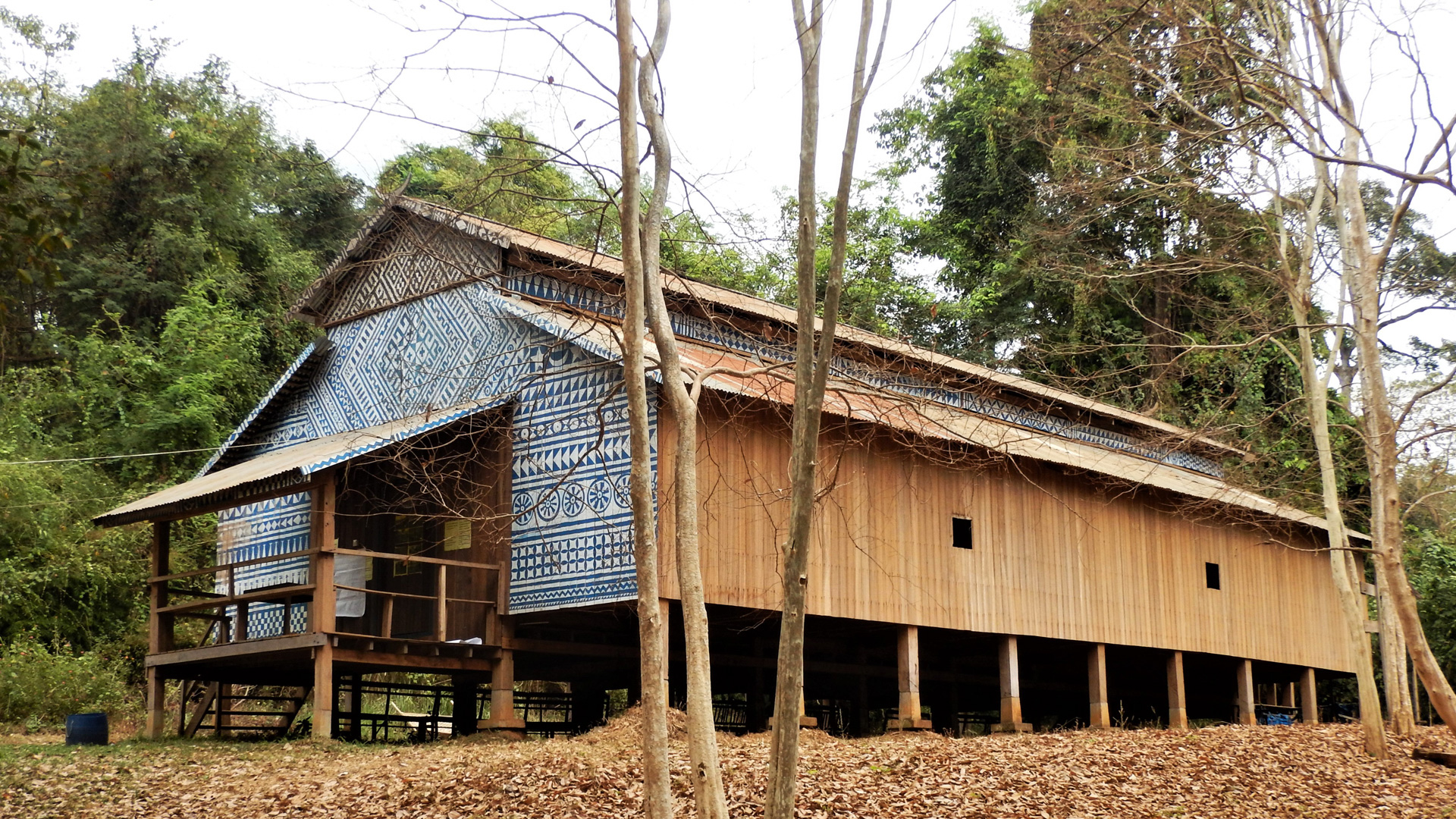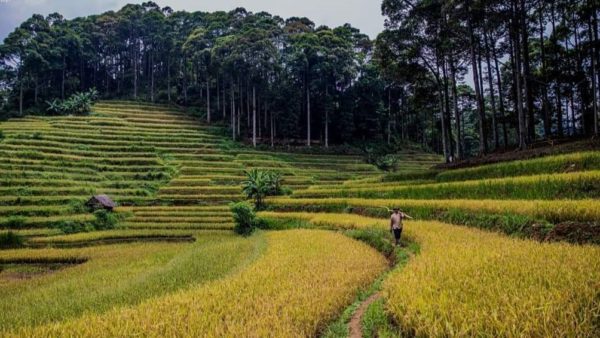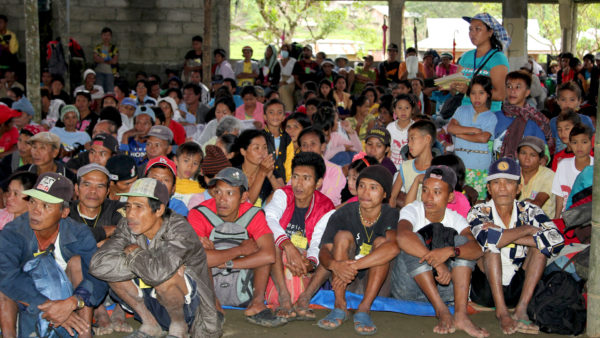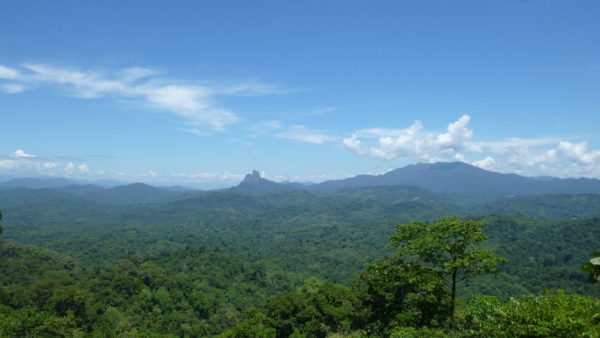Community management of this pristine area has supported livelihoods and local peoples' rights, providing a vital example for Indigenous and local communities throughout Cambodia
First published on 09/20/2023, and last updated on 11/13/2023
By Jeremy Ironside
Note: This article is from the recently published report “Celebrating territories of life in Southeast Asia.” The text has been edited for the ICCA Consortium website.
Yeak Loam Lake in Ratanakiri Province is a Cambodian icon and part of the nation’s folklore through songs and stories. It is a crater lake 800 meters in diameter, more than 50 meters deep and surrounded by 240 hectares of forest. Located five kilometers from Ban Lung, the provincial capital, it is a major recreation area and an important tourism site in the province.
For centuries the area has been protected and controlled by the Tampuan Indigenous communities living around it, traditionally in Lorn village’s territory. Their beliefs that this is the home of sacred spirits has made them want to leave the lake as it is. Its natural beauty makes Yeak Loam Lake truly one of Cambodia’s national treasures.
Community management of this lake developed from a combination of unique circumstances. After the Khmer Rouge civil war, the lake was occupied by the military. In 1993-94 a company opened a karaoke bar and brothel in the lake area. This became a national scandal, particularly as cultural traditions dictate that people should be quiet when in the lake area. Older villagers were greatly offended yet powerless as they watched the spirits of their lake and forest area being so gravely disrespected. Fortunately, intervention by the King and the Prime Minister forced the bar to close. In 1995 the provincial governor, Kep Chuk Tema, included Yeak Loam in a Provincial Protected Area system to try and protect some forest areas from a 1.4-million-hectare forest concession covering all of Ratanakiri province.
At this time, the International Development Research Centre (IDRC) began its work on community based natural resource management in Ratanakiri Province. The provincial governor became committed to this approach and requested IDRC to organize community management of Yeak Loam Lake. Against some local opposition, in 1998 the governor signed a 25-year agreement with Yeak Loam communities to manage the lake.
Community management of this pristine area has supported livelihoods and local peoples’ rights, providing a vital example for Indigenous and local communities throughout Cambodia. Recently, a new Community Lake Committee was established, some with earlier lake management experience. This was to address management issues and is another of several attempts to maintain control of their lake, because business interests and their government allies have long wanted to take over. The Tourism Department and other powerful government officials have stated in many meetings with the Lake Committee that the province wants to transfer management of the lake to a company because community management and protection has not increased income or renovated the area.
In 2008, the Provincial Government approved a 500-hectare eco-tourism concession over Phnom Youl mountain, five kilometers to the east of Yeak Loam Lake. Sixty-five Yeak Loam families lost their farmlands and neighboring Aikapiep Commune communities, for whom Phnom Youl is their sacred hill and spirit forest, lost access to forest products. The company planned hotels, a casino and cable cars, but these plans depended on getting control of the lake. The government informed the Yeak Loam Committee that it would lease the lake to this company, arguing it could provide important tourism development. Officials commented “this is the era of development, not protection”. A company representative offered the committee chair $US 10,000 if he signed his approval. He refused and the committee resisted this take over. Legal advice was that the concession was illegal. The company disappeared but Phnom Youl remains closed off.
This led to the establishment of the Yeak Loam Advisory Group to support the committee and communities. Fundraising carried out supported community management because the minimal lake entrance fees were used for maintaining and repairing the tourism infrastructure. With outside support, and money and labor contribution from Yeak Loam communities, a traditional meeting house was built as a place to discuss lake issues and to physically strengthen community control.
In 2018, a new provincial governor informed the committee that the lake was being handed over to a Chinese company for 75 years. This company was going to invest $US 7 million in a five-star hotel with 100 rooms and 70 bungalows with swimming pools. These plans were despite the Prime Minister saying, during a visit to the lake that year, that the lake should be kept for Yeak Loam communities to manage. Committee and community members tried to argue to keep the lake for their traditional beliefs and livelihoods, but were also afraid to challenge the provincial government. The central government stepped in and rejected the plan, and then instructed the Ministry of Environment (MoE) to establish the lake as a Community Protected Area (CPA). However, again in May 2022 the same provincial governor called in the new Lake Committee members to ask them to carry out community meetings to discuss whether they would agree to handing the lake over to a company as a concession. The reasons given were for development and local employment. The community meetings have not yet been carried out.
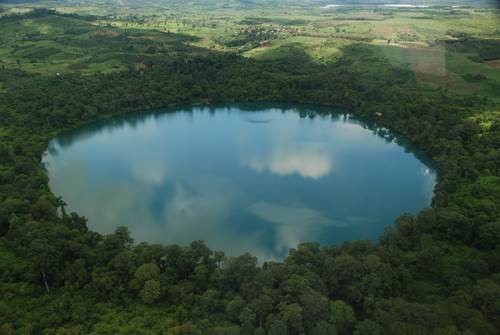
These attempts at outside control indicate the general pressure on the Lake Committee to hand over the lake. Significant outside support from a past governor with a broader worldview than some of Ratanakiri’s political hierarchy allowed for implementing principles of participation, community management and local land rights. This however illustrates the precariousness of the situation. As pointed out in a 1999 IDRC report, this outside support “will be needed until they have the capacity to effectively administer and manage the area. With … change in provincial administration it remains to be seen how much political will there is for local community management”.
The proximity to the provincial capital means Yeak Loam Commune has been at the center of provincial changes for some years. This has made lake management particularly challenging. The powerful deem it not correct for villagers to possess the jewel in Ratanakiri’s tourism crown. They see the Chinese and other development attempts as standard development processes, whereas the communities want to maintain the lake as a natural site to respect its spirituality. Communities want to balance this with getting benefits from the income from ecotourism operations, such as for wells and other necessities in their villages. Some of this has been done, but it has been difficult given the need to maintain the tourism infrastructure. Benefits have been limited to lake staff on low salaries and to market sellers, particularly with the Covid-19 pandemic’s impact on tourism. There have been problems of staff borrowing money from lake income, and difficulties in repaying these loans. Human resource capacity remains a problem, despite some competent and dedicated committee members. Initially there was difficulty in managing the complicated finances in a busy tourism site. This has been part of outsiders’ critique of community management. Capacity has improved since, but the changes in the committee in 2021 were related to financial management. It has been difficult for the committee to deal with the important issues needing attention, at the same time resisting the outside pressure to take over the lake. Some community members have also commented they don’t know what is happening with the lake, with a decrease in a feeling of community ownership. Outside influence and the degree to which communities feel they are benefiting and in control of their lake are ongoing challenges.
The past 23 years has been a contest between business interests for standard development and community management and protection. The provincial agreement has been a fragile form of tenure and national level recognition was required. Since this did not eventuate, the communities’ claim has been continuously questioned. So an ongoing question is: to what extent will the communities be able to control the Yeak Loam Lake jewel? Indigenous organizations and networks see the lake management by the community as symbolic of the struggles for recognition of community tenure. Because of its significance, the direction which Yeak Loam takes will impact on cultural rights and community-based tourism throughout the country.
